

Introduction
This revival has not been documented in a way that will answer an outsider’s many questions. Though many details are not accessible, we have chosen to write this story from the scarce information available to us at this time.
Torture and Imprisonment – Prior to the Revival
Beginning in the late 1950s, when the communists gained control of Cuba, they began torturing and killing pastors. Many pastors, if they had the money, fled the country, or they dropped out of the ministry. The ones remaining were not the flamboyant and powerful leaders of mega-churches. They were the ordinary and common pastors that lived among and loved their people.
The Cuban Church for the next 30-40 years suffered tremendous persecution and oppression. Even so, the persecution served to purge the Church of the lukewarm, leaving behind the anointed dedicated believers willing to risk everything for Christ.
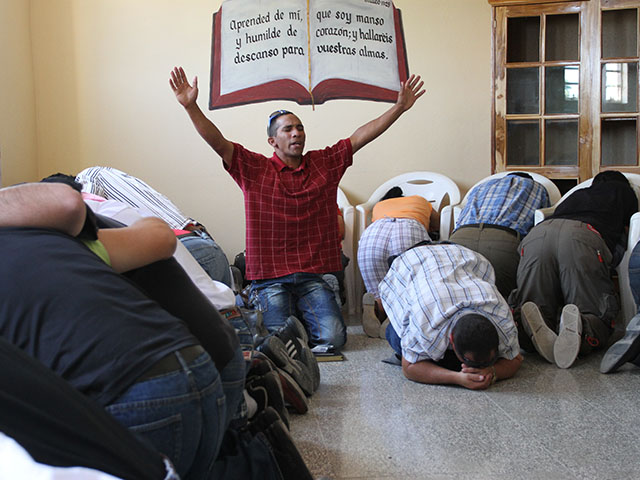
Extraordinary Prayer
This is a comment from a Cuban, as to why revival came to their island nation:
It has come because we have paid the price. We have suffered for the Gospel; and we have prayed for many, many years.

What Happened
The revival began in a small church in Madruga, Cuba, in 1988. An evangelist had come to conduct services for four days, and the pastor of the church said that because the presence of the Lord was so powerful, that
People would begin to weep when they entered the church.
Many miracles occurred, and after four days the evangelist left, leaving the pastor wondering how to keep the current move of God moving forward.
At the next service, some people brought a man who had been paralyzed all his life to receive prayer for healing. The people, who had recently been witnessing miracles through the recently departed evangelist, gathered around to see what the pastor would do. Instead of praying for the man, the pastor preached. At the end of his message, he knelt beside the man and said,
Just as Peter did, I command you to rise up and walk!
The man jumped to his feet and began running around the church. The crowd was overwhelmed. People began bringing hundreds of sick people to the church for prayer. The crowds became so uncontrollable that the army assisted in managing the crowds.
The only way the ministry needs could be met was to conduct services 24 hours per day, with up to 400 in each service—40 minutes for each service. One church service was held inside the church, and one was conducted simultaneously on the flat roof of the church.
The pastor and other leaders became so tired that the young people were called upon to preach as well. The lines leading to the church were four blocks long. The many miracles kept the crowds coming. The revival at this particular church lasted two months before the government shut it down.
There were more than 60 other churches that experienced a similar move of the Spirit, and that revival atmosphere lasted for several years.
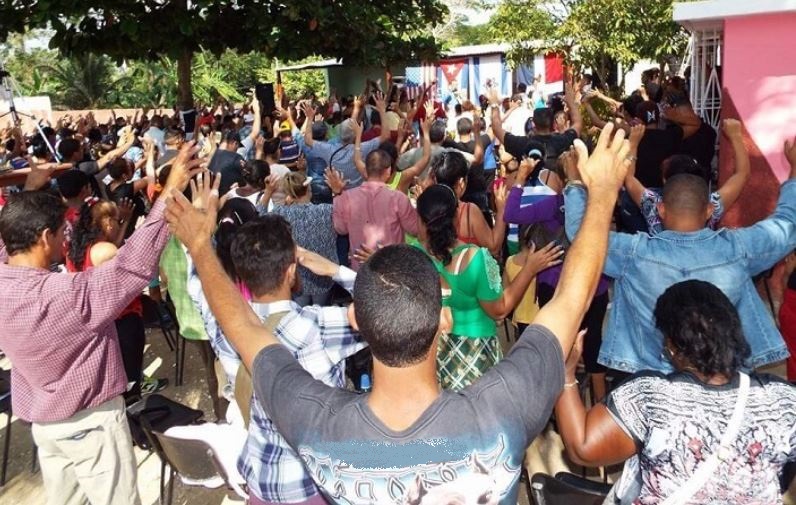
Opposite End of the Island
The evangelist who conducted the four day service in Madruga had traveled to the city of Santiago, where, with two other pastors in that area, he began to hold services. And as before, the miracles began.
As people heard about the many healings, they came by the thousands. After five days the police busted into the church in the middle of a meeting, dragging the people out as they beat them. They smashed the piano and pews and put the leaders in jail.
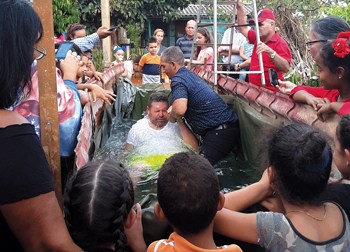
Water Baptism
Results of the Revival
► The spirit of atheism was given a severe beating.
►The revival was experienced by Pentecostals, Baptists, independent evangelical churches, and some Methodist and Nazarene churches.
► One Assemblies of God church had around 100,000 visitors in six months, many coming on buses. One weekend they had 8,000 visitors.
► Healing miracles became common.
► In one evangelical church over 15,000 people accepted Christ in three months.
► A Baptist pastor reported signs and wonders occurring continuously with many former atheists and communists being saved. So many were converted that more than 2,400 house churches had to be established.
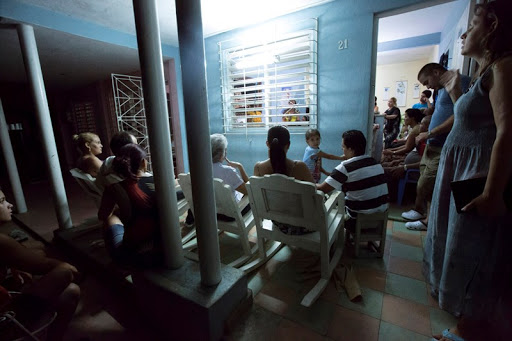
House Church, with some seated and standing outside.
► In central Cuba, a miraculous healing took place at a 150-seat church at the beginning of a nine-day crusade. The impact of that miracle was so great that 5,000 tried to pack themselves into that building. During those nine days, 1,200 people became Christians, and there were further healings. The two pastors were eventually put in prison, but the revival continued to spread throughout Cuba.
► Though open evangelism was outlawed, children, teens, and adults continued to witness boldly in parks, beaches, and other public places, regardless of the risk. One pastor commented that there was a “holy and glorious restlessness” among the believers.
► The once defensive mood and attitude of the church turned offensive, making the believers united behind a common vision: “Cuba para Cristo” – Cuba for Christ!
► In 1990 an Assemblies of God pastor, whose congregation never exceeded 100 people meeting once a week, suddenly found himself conducting 12 services per day for 7,000 people. They started lining up at 2 am and even broke down doors just to get into the prayer meetings.
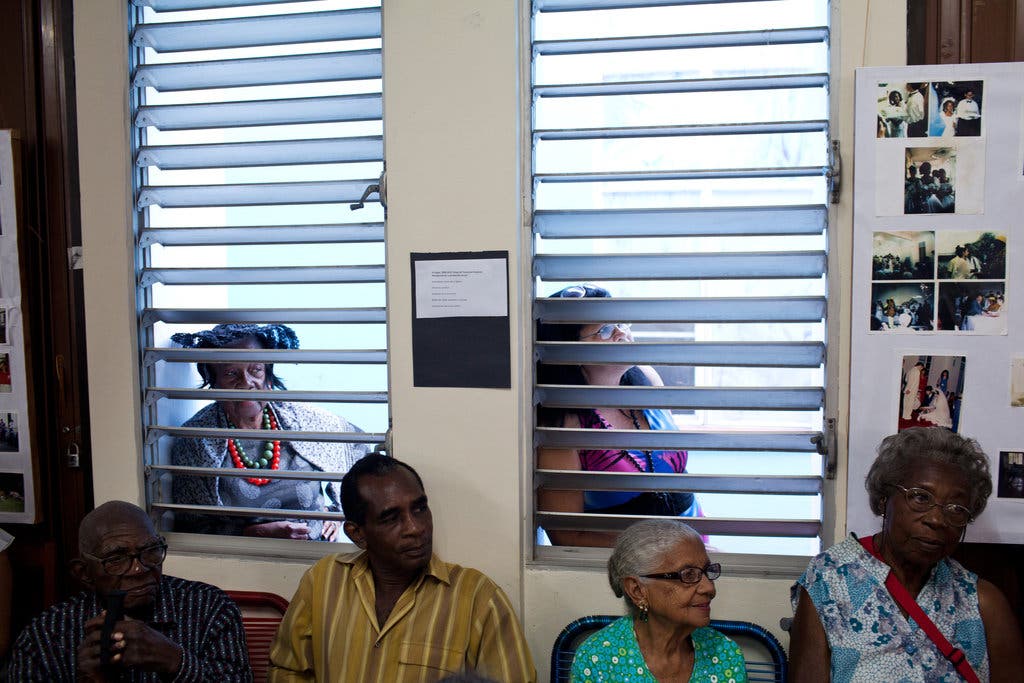
House church, some listening through windows.
Sources
► Praying the Price by Stuart Robinson
► Apostolic Faith and Pentecostal Timetable of Key Events by Bernie L. Wade
► Revival Fires by Geoff Waugh
► Flashpoints of Revival by Geoff Waugh
► Revival Fire by Geoff Waugh
► More Miracles in Cuba (part 1)
► More Miracles in Cuba (part 2)
► Preparing for Revival by Brian Mills
► The Great Cuban Revival of 1988 by Seth Barns
► The Untold Story of Revival in Cuba by Persecution International
Return to List of Revival Stories
Chet & Phyllis Swearingen:
Office: (260) 920-8248
romans1015@outlook.com
Beautiful Feet
P.O. Box 915
Auburn, IN 46706

